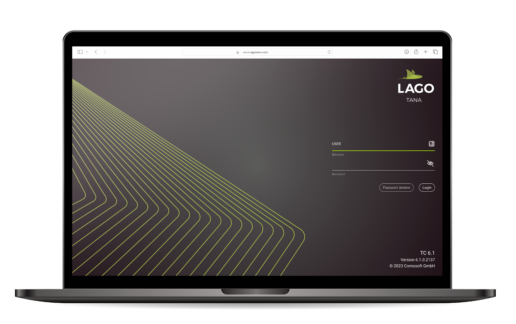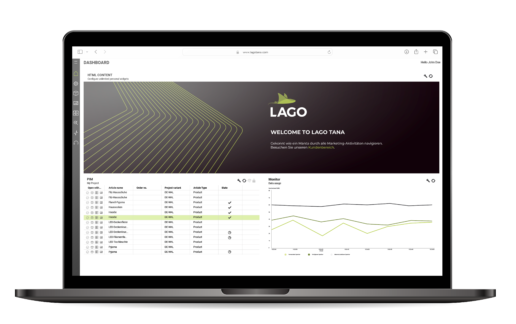4 Ways to Improve the Retail Customer Experience
4 Ways to Improve the Retail Customer Experience
To make the customer experience central to their marketing strategy, retailers must thrive in offline (print) and online digital channels.
The retail customer experience is not an easily definable event – or even a series of events. It’s a complex relationship, not a checklist of dos and don’ts. And, like all relationships, it takes time and effort to develop. In recent years, it has become more challenging. Since the emergence of e-commerce and smart devices, amplified by crises like the pandemic, today’s customers insist on a “shopping anywhere” world. Retailers have no choice but to meet them where they are. What was once a relatively stable environment for marketing and advertising directors is now more like the 2022 hit movie Everything Everywhere All at Once.
One of the critical elements to coping in this environment is the retailer’s ability to provide consistent messaging across a seemingly infinite number of platforms. Print-based marketing and advertising haven’t declined but have changed, increasing complexity and customization. And as online channels multiply, they, too, demand a flood of consistent messaging and product details. It seems overwhelming, but there are ways that retail merchandising planners and their IT manager partners can control that flow and improve the overall customer experience.
1. Go Beyond the Screen
The hybrid shopping experience has become a retail fact of life. Customers with smartphones frequently browse in brick-and-mortar stores, only to price check and even purchase the product they like on Amazon. But the real problem is not Amazon, per se. It’s that the brick-and-mortar chains’ smartphone apps are not as agile as those of their online rivals. Special offers and incentives from the print catalog or flyer are not reflected in the mobile app, and the customer’s experience finding and buying products in person and online is too often separate.
This need not be the case. As detailed in a recent case study, home improvement giant Lowe’s achieved remarkable results in multichannel marketing for its 2,000+ locations. They did so by deploying Comosoft’s LAGO system to integrate the company’s product information management (PIM), digital asset management (DAM), and other data systems with its marketing production hubs. The system allowed their merchandising planners to easily create customized versions of their printed materials and export the same offers and incentives to Lowe’s mobile app, which customers could use to locate specific products in the store.
2. Consistency and Customization
The bane of complex, multichannel marketing is the overwhelming sea of data that describes each product. With so much data per product, even a single promotion can involve intensive (and costly) manual efforts to ensure everything is correct. The LAGO system automatically pulls all the related product data from PIM, DAM, and other systems to reduce overhead and consistently promote the right products for a particular region. It also allows for regional variations in print and interactive digital publishing applications.
All this activity happens behind the scenes, of course. The shopper sees a consistent customer experience of the retail brand across multiple touchpoints.
3. Work With Emerging Technology and AI
The modern customer experience also includes a remarkable degree of personalization, allowing the retailer to tailor its promotions to the needs and buying behavior of demographic or regional groups—even down to the individual level. But all that “magic” is based on the wise and responsible use of big data.
By definition, retailers have access to enormous volumes of data, including product data from the original manufacturers (stored in PIM, DAM, and other repositories) and transactional and feedback information from individual customers. Putting that data to work is the real challenge. One way of doing so is with LAGO’s Direct Individualized Marketing (DIM) module, which matches known customer preferences with detailed product data to create personalized, one-to-one communication via print and digital channels.
Of course, discussing big data would only be complete with exploring the possibilities inherent in AI. Comosoft and DecaSIM revealed in a recent case study that AI tools can identify purchasing patterns, such as customer preferences for related products. When paired with LAGO’s ability to manage promotional campaigns, the AI tool enabled merchandising planners to make better product selections, significantly boosting store revenue.
4. Focus On the Product Experience
At the end of the day, a good customer experience depends on individuals finding the right product for them, being happy with their purchase, and developing a sense of loyalty to the retailer who made that possible. Over time, that relationship will lead to repeat purchases and increased word-of-mouth referrals.
However, replicating such positive, brand-building experiences for thousands of customers and millions of products means that the retailer must have high data agility. Their advertising and marketing teams must expertly juggle vast amounts of data, synchronized across multiple systems, customized to the regional, demographic, and even individual level, and delivered across various print and digital channels. They must also do so affordably and under enormous time constraints.
That level of data agility is possible only with systems like Comosoft LAGO.
Find out more about Comosoft LAGO’s unique, multichannel approach. Or book a demo to see for yourself.
5 Retail printing trends you can expect to see in 2024
5 Retail printing trends you can expect to see in 2024
Those claiming that the power of print is waning need only look at the numbers to see how far this is from the truth. Print media is one of the most trusted media channels among consumers, who reportedly trust newspapers and magazines to help make a purchase more than any other type of advertising. In fact, 82 percent of Americans rely on newspaper and magazine advertising as a reliable source.
As a reflection of this trust, the retail print and consumables market is demonstrating significant growth. Looking ahead, the demand for these materials is anticipated to grow between 2023 and 2033 at a compound annual growth rate (CAGR) of 4.5 percent.
Overall, the retail industry is showing signs of growth – and with plenty of innovations in publishing print, retail print marketing is having a moment to carry into the new year.
The U.S. Postal Service recently shared that consumers who receive direct mail from retailers not only purchase 28 percent more items but also spend 28 percent more compared to those who do not receive direct mail marketing materials. Print marketing continues to connect with consumers in fresh, exciting ways. Here are some retail print marketing trends predicted to blaze new trails and lead the way in 2024.
1. A focused effort towards real sustainability
Regarding publishing print marketing materials, retailers are looking for strategies to make their processes more sustainable. This drive toward sustainability includes factors like:
- Limiting carbon footprint and reducing waste production
- Choosing recycled materials for paper, ink cartridges, and other supplies
- Sustainable printers and printing devices
Where is this drive toward sustainability coming from? It’s coming directly from consumers. Recently, an astonishing 84 percent of customers stated that discovering that a brand has poor environmental practices would alienate them from that company – and 55 percent of these customers would even pay more to support an eco-friendly brand than those with less sustainable practices.
Moving into 2024, brands should examine their printing processes to discover how they might make them more sustainable – and how they can share this information with their audience to foster a transparent connection with environmentally-minded consumers.
2. Printing according to demand: Short-run printing
Short-run production and printing on demand are tied closely with a movement toward sustainable publishing. Not only does this limit waste, but it also reduces excess production and costs associated with it. With on-demand printing, retailers are becoming more strategic and printing fewer copies of their printed marketing materials while only producing additional copies as needed.
Short-run printing can be a smarter alternative to larger printing runs when introducing a new product, trying out new content, or even targeting a smaller, niche market with a more focused message. It can also be an effective tool for market research analysis. By including unique promotional codes or QR codes in short-run printing materials, retailers can gather more specific data about how their customers respond to a particular product or marketing initiative.
3. A continued push toward personalisation
Personalised print marketing will continue to be an essential trend moving into 2024 for one primary reason: It works. This highly effective print marketing strategy has proven results. Direct mail print marketing personalised to the recipient generates 135 percent better response rates.
There’s much power in personalisation. Consumers already possess a strong emotional connection to a tangible message they receive and can hold. But when retailers match the impact of direct mail with personalisation through customer data, custom greetings, and product recommendations, it amplifies this connection.
Customers feel valued and prioritised When they get a message from a brand that’s meant specifically for them. Perhaps that’s why 75 percent of millennial-aged consumers share that when they receive personal direct mail, they feel special and there’s something quite powerful in that.
With advances in publishing solutions, personalised printed marketing materials aren’t out of reach. Personalisation can be a simple and affordable way to strengthen relationships between retailers and consumers. It can include customisations for location, industry-based marketing, and even customer retargeting – which was once only financially feasible online.
4. The sensory experience of print
Perhaps one of the most significant assets of a print catalog, magazine, or direct mailer? It’s not online. The typical U.S. consumer will spend a daily average of 4 hours and 25 minutes – or 65 full days – on their phones in 2023. Conversely, Americans keep printed, direct mail advertisements in their home for an average of 17 days – and 41 percent of all Americans look forward to checking the mail daily, most of which consists of advertisements.
A printed catalog is a unique, memorable experience in a world saturated with digital interactions. For this reason, many retailers will continue designing print marketing materials that focus on the tactile experience to interact with consumers’ senses in a way digital media can’t. This strengthens the emotional connection consumers feel toward a particular product or brand.
What do these tactile experiences look like – or rather, feel like? It might be the feel of the paper, with choices like linen or textured paper, or even letterpress printing, engraving, or embossing, raised UV and polymer finishes, or specialty coatings like leather or even paper with a sandy texture. It might also be the added texture, look, and feel of interacting with hand-sewn or high-end binding.
The trend of creating a sensory experience for consumers isn’t limited to the tactile feel of printed materials. Some retailers are looking for ways to reach the other senses, even experimenting with adding scented inks, coatings, and varnishes during the print run. Since the sense of smell connects to emotion and memory, this can be a powerful tool for retailers to delight and surprise their customers and make a lasting impression.
5. Embracing new technologies and augmented realities offline
While not a new trend, including personalized URLs and QR codes to drive customers online and track behavior continues to be popular – but these are not the only ways retailers will leverage technology in their printed marketing campaigns.
Consumers are incredibly excited about the possibility of new technologies like artificial intelligence (AI) and augmented reality (AR); they’re eager to test out these tools and see all the different ways they might be used.
Printed augmented reality features included in these printed campaigns can capture the attention and imagination of consumers, with options to discover a product on the page, then use their phone to get a 360-degree view or detailed look at what this product can do or even how it will look in their home.
AR can enhance the user experience and help customers through their decision-making or buying process by scanning a link on the printed page. It’s important to note that customers in 2023 and 2024 may not be eager to download an app to use these features. Thanks to the introduction of WebAR, however, retailers can still implement AR experiences into their print media.
With WebAR, consumers can access many AR features through their device’s web browser. These web-based AR tools present an incredible opportunity for retailers to build innovative campaigns that merge the digital and physical worlds with interactive content and try-it-before-you-buy-it offers that enrich the entire customer experience in a brand-new way.
Comosoft keeps you ahead of the trends
LAGO by Comosoft is a one-of-a-kind marketing automation tool that revolutionizes the entire collaborative workflow process in real time, making it possible for retailers to store data and digital assets in one secure repository accessible from anywhere. The result is a more efficient publishing process that lets you stay updated on the latest trends. When you manage the entire Digital Asset Management (DAM), Production Information Management (PIM), and publishing process from one place, there’s more time to keep up with the newest innovations.
Comosoft LAGO is an all-in-one marketing production solution fully equipped with both a PIM and DAM solution. It supports your operations with integrated workflow collaboration support, versioning
LAGO TANA Release
LAGO TANA – Explore a whole new version of LAGO!
Improved interface, streamlined features and proven workflows:
With this release Comosoft enters a new era of LAGO versions – Beginning with the name Tana and a new LAGO logo. If you ever happened to have an encounter with a manta ray, our new logo mascot, you met one of the most calm and majestic animals on the planet. The version name Tana refers to the biggest lake in Ethiopia, which is the water mouth of the Blue Nile, and the surrounding prolific reserve.
HIGHLIGHTS
A completely new look and feel of LAGO is a long awaited change and above all reflects the new modern technology behind LAGO TANA. Despite the new UI, LAGO retains the familiar user experience. The most impact will be brought by the flat design and a general brighter appearance of the interface. Calm sections with reduced design elements will help users focus on their tasks.
Better overview, faster access. The new LAGO Dashboard, included in our web client will greet all users upon login and before navigating into one of our various applications.
LAGO Dashboard allows to configure global and personal dashboards. Global dashboards can be shared with user groups to ensure that users of the same group have access to the same information. Optionally users can create their own dashboards. Editing the layout of a dashboard is easily done by simple drag and drop actions.
For the content of the dashboards, various widgets are available, such as a global job list, which allows to directly jump into different application depending on the job (e.g. opening a document directly in LAGO Whiteboard or LAGO Proof). The widget “Search Results”, which is based on search folders contains quick links into the applications (e.g. to directly edit an article shown in a filter). LAGO Dashboard can also be used to distribute information such as announcements or links to other important resources, using the widget “HTML Content”.
For over 20 years, LAGO has been using Adobe Photoshop® to process assets for various use cases, from which the import of assets is the main use case. With more parts of the application moving towards the server and aways from client applications, the usage of Adobe Photoshop® has become challenging for IT departments.
The solution is the LAGO Asset Processor, which is the server-based solution for LAGO Pict with Adobe Photoshop®. LAGO Asset Processor runs on the LAGO Application Server (“LAS”) as a servlet within Apache Tomcat and performs asset processing for import and export purposes without the need of Adobe Photoshop®. It is designed for scalability and allows the setup of multiple instances in multiple Apache Tomcats if needed. It is also possible to assign different tasks to different LAGO Asset Processor instances.
Configuration and management of LAGO Asset Processor is being done within LAGO Admin, where instances, tasks and task configurations (e.g. “Hotfolder” configurations) can be configured. The logging and activity can be viewed within LAGO Monitor. The tasks can be activated and deactivated on the fly without having to restart the LAS.
The LAGO Asset Server within LAGO Pict, including the plugin for Adobe Photoshop® is still available with LAGO TANA. However, asset processing without Adobe Photoshop® is only possible when using the LAGO Asset Processor.
The module “LAGO History” including the corresponding application LAGO History has historically been an application for administrators, which allows to view a history on specific data changes per data entity. For example, showing which user has updated a certain price or article. Due to the potentially massive amount of data changes, end users were not the target audience for LAGO History.
This changes with LAGO TANA, since now we offer customisable reports for which administrators can define which data fields are visible in the report and for the first time allow to combine data from various different entities. This makes it possible to not only show a price change for a certain article, but also to which element that article might be assigned as well as the page on which the price change has happened. Previously this information had to be gathered from several views. In addition, an extended search and filtering is now possible for the data to be shown in the report as well as being able to compress variants. The result are condensed reports that can be viewed by end users.
The customised reports are configured within LAGO Admin and LAGO History. Users can access them directly from the project list of LAGO Whiteboard and even within LAGO Whiteboard itself. When selecting a custom report for a page, only changes for articles and elements assigned to page are shown. When selecting a raster field, only changes for that element and its articles are shown.
The usage of the custom reports in LAGO History requires the module “LAGO History”.
The LAGO article type structure is the backbone of every LAGO installation, especially when using LAGO as the centralised product information management system. As the business of our customers grows and evolves, so does the article type structure. New product ranges are added, others are removed or changed. This can have an impact on the article properties as well and might lead to the situation where article property types need to be consolidated and/or deleted.
The article property types however are used in various places in LAGO, such as document templates, scripts and tables. A deletion of a property type could therefore cause a data loss in the system.
With LAGO TANA the new module “LAGO Property Remapping” allows a remapping of article property types which will remap all references of an article property type to a new one.
Support of Adobe InDesign and Photoshop 2024
LAGO TANA will add the support of Adobe InDesign and Adobe Photoshop 2024.
LAGO Layout: Easy access to placeholder settings and highlights
Changing placeholder settings (e.g. dummy values) within document templates can now be done directly in the placeholder palette instead of having to go the template settings dialog. Moreover, the highlight of placeholders can now be enabled/disabled with a single click with the palette “Annotations”.
LAGO Layout: On-demand update for all placeholders of current document
A new button within the placeholder palette allows to update all placeholders of the document without having to close and reopen the document.
LAGO Layout: Move elements between documents
It is now possible to move elements to other documents within the same project. The elements will be moved including all its details, such as components and assigned articles directly within LAGO Layout and without having to rely on LAGO Whiteboard or LAGO PIM/Explorer.
LAGO Layout: Generate PDF documents for a variants of different projects
For customers that are spreading the page production for one printed publication among different projects it is now possible to generate a PDF per project variant type across multiple projects.
LAGO Layout: Open document template of document
A shortcut is now available within the document palette that allows to open the assigned document template of a selected document.
LAGO DAM: Administrative Tasks
The administrative tasks known from LAGO Pict are now all available within LAGO DAM. This includes functions like completely deleting an asset, cleaning up the database from all logically deleted assets or the re-creation of an FPO/Preview for selected assets.
LAGO DAM: Display of asset properties
Asset properties, which were previously only available in LAGO Layout and the LAGO API are now also visible within LAGO DAM.
LAGO Admin: Default Password Policy
LAGO TANA enforces a new default password policy. All passwords must have at least 10 characters. Two of the same characters in a row are not allowed and the password must be different from the user name. This also applies if no password policy is configured within LAGO and also to all technical users, including the users for database connection. The password policy can be strengthened to be even more restrictive.
This was just an appetizer...
Schedule a demo to discover the high potential of LAGO TANA!
Putting AI To Work: How Retailers Can Find More “Diamonds In the Rough”
Putting AI To Work: How Retailers Can Find More “Diamonds In the Rough”
Last month, we discovered that artificial intelligence, far from being a threat to retail marketing teams, is, in fact, an essential team player. The early results of using DecaSIM’s AI tools in conjunction with Comosoft LAGO showed that the two systems complement one another, each providing unique benefits for retail advertising and marketing directors. In this month’s article, we look at the two companies’ plans and what they mean for retailers of every kind.
Test overview
Recently, we tested the effect of using AI to optimize product selection in a regional grocery chain’s marketing campaigns. As reported in the published case study, the results were truly remarkable.
In the test, the regional grocery chain selected a 104-store region (out of over 300 stores) and, using Comosoft LAGO, created a specific version of its weekly ad circular to optimize during the test period. Each week’s promotional plan was run through DecaSIM’s AI optimizer during the test period. The analysis results were used to select which items to feature on each page of the circular. Compared with the sixty-five other stores chosen as a control group, the AI-assisted promotions increased sales by over $4,000 per store per week.
As AI improves profitability in the retail grocery sector, other retail chains can expect similar or even better results.
The importance of foot traffic
DecaSIM co-founder Doug Edmonds described a crucial factor in the grocery retail industry that is common to all retailers.
“All retail is trying to drive foot traffic, often with price as an incentive,” he said. “Whether you’re a grocery business or a home improvement retailer, if you depend solely on infrequent shoppers, you won’t survive.”
Edmonds continued, “Every retailer has a ‘core shopper group’ they must satisfy. Whether they’re buying tomatoes or socket wrenches doesn’t matter; their product preferences, shopping habits, and price sensitivity matter. Using AI to learn those things gives all retailers an edge. It will help them sell more to that core group. It will also grow that regular foot traffic over the long term.”
Comosoft’s US President Randy Evans noted that the grocery industry was only the beginning. “Grocery retailers have been using LAGO for years,” he said, “especially those chains that require regional versions of their weekly flyers and mobile shopping apps. We’ve always made it easy to prioritize offers, pull data from various sources, and streamline the design process across multiple stores. A fast turnaround is essential. But with DecaSIM’s AI tools, grocery advertising and marketing directors can know what products to prioritize in each campaign. It’s a slam dunk for our grocery clients, but our other retail clients can do the same thing.”
Diamonds in the rough
This use of artificial intelligence solves a problem facing all retailers—finding meaningful information in a mountain of product data. With thousands or even millions of individual products from many sources, retailers’ databases today are jammed with data related to each SKU. Typically, these reside in product information management (PIM), digital asset management (DAM), inventory, pricing, and marketing management databases. Too often, they are poorly integrated, forcing marketing heads and designers alike to hunt for detailed information for each product. This process is both time-consuming and prone to costly errors. With limited time and a seemingly unlimited array of print and digital channels, picking which products to feature involves a combination of intuition and guesswork.
LAGO’s unique ability to unify the PIM, DAM, and other data sources is part of the solution, creating a collaborative workflow, including both the design and the review and approval process. But even with a data-optimised, multichannel workflow, it still falls to the advertising and marketing directors to make priority decisions during the planning process. And even experienced planners may miss promotional opportunities amidst all that data.
Enter the AI part of the equation. DecaSIM’s artificial intelligence tools take data from each previous LAGO-driven campaign, identify patterns of core shoppers’ product preferences, and derive inferences and purchasing patterns, faster and with greater accuracy from that mountain of data. It then returns the results to LAGO, in effect “supercharging” the metadata used to create multiple versioned campaigns. AI can, in effect, find marketing diamonds amid raw data that would take humans too long to process.
Roadmap to marketing success
Comosoft Product Manager Steve May outlined what this could mean for future versions of LAGO.
“Today, campaign planners use our whiteboarding feature to create offers and product groupings that make the most sense based on margin, availability, and success in previous campaigns,” he said. “LAGO could add AI-generated weighted scores, relationships to other products, seasonal or regional patterns, and other useful indicators to featured products. They would still choose which ones to use but would be more informed marketing choices.”
By adding AI to LAGO, sales and marketing campaigns could be planned and executed at scale, with an objective knowledge of their sales potential. Far from taking jobs away from retail marketing professionals, AI would serve as a highly efficient research assistant, gathering objectively valuable information that the planner would use to create effective campaigns.
“Today, people are nervous about AI and what it will do to their careers,” Evans said. “In the case of retail marketing, it’s pretty obvious that AI is an ally in our data-intensive world.”
Can AI help retail?
Can AI help retail? A no-nonsense strategy for success in the AI revolution
A mere eleven months ago, OpenAI launched the public version of its AI-based, large language model, ChatGPT. In that short time, the noise surrounding AI has dominated the media, boardroom conversations, and almost every social gathering on the planet. Retail advertising and marketing directors everywhere are inundated with questions. “What are we doing about artificial intelligence – and how will we survive without it?”
Thankfully, Comosoft and its AI development partner, DecaSIM, have a practical answer. They now offer a clear path for retailers searching for real-world AI solutions, relieving the pain of turning vast amounts of complex data into meaningful, more cost-effective marketing campaigns. In a recent case study, a leading regional grocer implemented a live test of Comosoft’s marketing automation system, LAGO, in combination with DecaSIM’s AI-based data analysis tools, generating positive results from week one. By optimising which promotions to feature in its advertising and creating more customer engagement, the company demonstrated increased weekly sales and an eight percent increase in EBITDA profitability.
Artificial intelligence for the rest of us
Much public anxiety over AI stems from common misperceptions about the technology. ChatGPT and other “generative” AI systems often look for patterns in vast amounts of unstructured data – meaning there are no preexisting identification tags or metadata to help us sort or classify them. The Comosoft/DecaSIM AI model is based on a smaller set of structured data, such as the known purchase history of specific products, prices, and seasonal buying patterns. The AI tool uses the data to solve equations to create new (and precious) metadata describing shoppers’ behavior and preferences about specific products.
In other words, the AI is finding meaningful inferences from the data based partly on the domain knowledge of advertising and marketing professionals. It does so with volumes of data that, while not as vast as the trillions of data parameters required by generative AI systems like ChatGPT are still too large for humans to analyse without help.
All this puts the Comosoft/DecaSIM approach in the category sometimes known as “Narrow AI,” or artificial intelligence designed to perform specific tasks. This differs from purportedly self-aware, artificial general intelligence or AGI, which is still hypothetical at best. However, since simplified tasks are critical to retail success, advertising and marketing directors have little to fear and much to gain. The belief that AI is taking over from humans is offset by a growing awareness that AI can be a critical part of any retail marketing team.
During the testing process with retailers, DecaSIM co-founder Chris Antipa noted that advertising and marketing departments are finding their work enhanced, not threatened.
“There’s always this natural pushback, with people saying, ‘Hey, computers are coming for my job.’ But as time passes, they begin to understand what the AI is doing for them and talk about the platform as a teammate. They even joke that they should give it a nickname.”
Putting AI to work
The combination of DecaSIM’s AI tools and Comosoft LAGO can only be described as a high-impact data solution. LAGO already automates various vital functions for retailers, including integration of campaign planning, numerous data sources, and streamlined production of print and digital campaigns – including multiple regional versions of each catalog, flyer, or digital equivalent. Using AI elevates that process even further. Historically, structured data from LAGO and other sources are fed to the DecaSIM system, deriving meaningful shopper habits and preferences for specific products and product categories. This enhanced metadata is fed back into LAGO, providing an objective basis for promoting particular products at specific locations and times of the year.
The results have been remarkable. Co-founder Doug Edmonds recounted the response of one retail executive, who said the DecaSIM/LAGO combination “made every ad like a holiday ad,” thanks to the system’s ability to anticipate shoppers’ preferences and product attributes. “The data we utilize contain context and meaning hidden to most of the retail world,” Edmonds continued. “AI uses those data to define that context and meaning, rate its importance, and add all that to the metadata for each product and category.”
The LAGO approach, which integrates marketing-relevant data from product information management (PIM), digital asset management (DAM), and other sources, is ideally suited to optimise the new DecaSIM data. “Traditionally, more than half of our implementations start with some rich data feed,” said Comosoft Product Manager Steve May. “Typically, this is a collection of product SKUs, digital assets, and offers. With DecaSIM, the data are enhanced before we even get it.”
This is especially important to advertising and marketing directors at the planning stage of a campaign. LAGO’s whiteboarding capability already gives them an overview of which products to feature prominently based on criteria such as regional availability, profit margin, and sales history. With the addition of DecaSIM data, they also can have reliable indicators of what shoppers will more likely purchase, including their preferences for related or alternative products.
“LAGO and DecaSIM are both ‘painkillers’ for retail advertising and marketing professionals,” said Comosoft US President Randy Evans. “One stops the pain of integrating PIM, DAM, and other data to execute campaigns at scale. The other removes the guesswork of which products are more likely to sell.”
The future of AI in retail marketing
The success of this approach is not limited to the grocery market. Retailers depend heavily on regular foot traffic and a known population of frequent shoppers – a dimension that fits everyone from home improvement and hardware retail chains to fashion and lifestyle brands. Knowing objectively what shoppers want and advertising accordingly is a holy grail for all retail marketers – one that DecaSIM’s AI can find and LAGO can implement, even down to the local level and on multiple print and digital platforms.
The two companies are actively engaged in combining and expanding these capabilities shortly. Some of these enhancements will be the subject of next month’s article.
Why you absolutely need a digital catalog
Why you absolutely need a digital catalog
Just like when a patron sits down to eat at a restaurant and expects to see some menu, your customers want to know what your brand has available for purchase. Diners at a restaurant want to read descriptions of what’s on the menu, complete with ingredients and information like potential allergens and prices.
With your catalog, your customers want to see specific details for each product they might be interested in, with a thorough description, price list, and eye-catching photos that help them see how your products can fit into their lives.
But here’s the thing: Many restaurants have shifted their menus online over the past few years. With QR codes posted at every table, restaurant patrons can peruse the menu on their smartphones to get a taste of its offerings. While this shift to digital menus is related to the COVID-19 pandemic, many in the restaurant industry say that this change is permanent.
Similarly, many retail brands are incorporating a digital catalog into their marketing toolbox and finding it incredibly worthwhile. Consumers spend a great deal of time researching products before they make a purchase, and having a catalog readily available – wherever they may be – is essential.
Whether connecting and selling to consumers directly or working in a B2B capacity, you need a digital catalog. Not only does this streamline your eCommerce channels and make them more accessible, but it can also change the entire user experience for those who interact with your brand online. Here’s an in-depth look at why a digital catalog isn’t just a nice-to-have feature anymore.
Do more with digital
Sure, a printed catalog is a tangible reminder of your brand and can be a powerful tool. But beyond flipping through the pages, there’s only so much else to do with it. On the other hand, a digital catalog can be interactive and engage readers in new and unexpected ways.
With a digital catalog, flipping through a catalog can be much more immersive. For example, readers can click on a picture to read an article, see a product description, get a linked list of all the products displayed in that one photo, or even make a purchase. And with freeform navigation, readers can explore the catalog ways that hold their interest.
Digital catalogs empower you to do all kinds of things that wouldn’t be possible with a print catalog. For example, you can incorporate hidden depth content, which allows readers to click and gain access to extra features like:
- Downloadable PDFs
- Extended photo galleries
- Captions and additional information
You can also incorporate features like video content, personalisation, audio recordings, animation, and more for a truly unforgettable catalog experience.
Make it personal
With the advent of AI-driven tools, personalization is more popular than ever. Digital catalogs make personalization possible on a much broader scale. Why is personalization so popular?
Because it works.
Ninety-nine percent of marketing professionals agree that implementing personalization into their efforts advances customer relationships. And consumers agree. Eighty percent of consumers report that they are more likely to purchase if a brand offers a more customised experience.
This experience is significant for business-to-business (B2B) brands that might craft a personalised catalog for one company – or even one person – if it means they could land a new account or make a big sale. In many cases, drafting, publishing, and printing a one-off catalog could be cost-prohibitive. Creating a digital catalog opens the door to providing this level of personalisation to even more readers.
Digital catalogs also help you capture data about the shopping experience to deepen personalisation. They can help you understand things like:
- Customer behavior
- Personal preferences
- Purchase history
This information can then be passed off to sales teams to help them connect with customers and better address the problems they are looking to solve. It can mean higher conversions and an increase in customer satisfaction.
Connect your catalog to your eCommerce site
Perhaps one of the most captivating reasons to create a digital catalog is that it enables you to sell your products online – and take your selling beyond just a webpage to an eCommerce-supported catalog. With catalog software, you can add new products every day, remove them from the catalog as inventory shifts, and make it easier for readers and customers to discover a product and then make a purchase.
As a combined digital asset management (DAM) and product information management (PIM) solution, LAGO by Comosoft makes this happen. Catalog pages can be automatically updated to stay current with the latest pictures and digital assets and the latest inventory information.
What’s more, LAGO easily syncs with your existing eCommerce technology, turning your digital catalog into a fully functional selling platform; readers can purchase your products without having to navigate away from the catalog.
Support your team via a range of devices
Digital catalogs also fill a particular gap in supporting your team wherever they are: Getting them the information they need on their mobile devices. Digital catalogs – and digital catalog management software – enable your internal teams to access data from anywhere. Digital catalogs fill the gap in finding product information quickly and efficiently with features like:
- Fast product search
- Communication in real-time
- Streamlined workflows
Take your catalog digital with Comosoft
At Comosoft, we’re here to make digital publishing easier than ever. We aim to expand what’s possible so you can meet your customers wherever possible. And, with tools to support the entire creation and publishing process, we’ll support and streamline your work from workflow collaboration to publication and distribution.
LAGO by Comosoft is a digital publishing solution that’s both simple and advanced. We know that each page – printed or digital – is a chance to forge connections with your customers and highlight your brand’s best features.
Via a fully integrated PIM and DAM system solution, we’ll empower you to connect your digital catalog with your library of assets and your inventory management solution so you’re always providing your customers with the latest details. Enjoy collaborative workflows powered by real-time versioning optimization and intuitive proofing solutions to create a modern digital catalog faster and simpler.
LAGO Product Information Management
Learn more about our LAGO PIM and how we can help you organise your product information efficiently.
Email marketing tips to boost engagement
Email marketing tips to boost engagement
Email marketing is one of the most popular ways brands connect with their target audiences – far more so than traditional mail or almost any other marketing channel. But when the average person sends and receives around 121 emails daily, inspiring recipients to open up can be challenging.
You can craft witty, motivating email copy and introduce it all with a catchy subject line, but these aren’t the only ways to boost email engagement. After all, it’s not just the assets in your email marketing that matters.
Here are a few strategies to connect with your audience via email beyond just what’s on the page.
Give empathy a go
As the world of email marketing becomes increasingly focused on open rates and click-through rates, it can be easy to think solely of marketing dashboards and statistics. But it’s important to remember that every email your organization sends out goes to real humans.
Of course, it’s important to analyze data and think about how to optimize your marketing efforts. But this data-driven approach should be paired with a just as essential factor: Empathy.
Empathy is – and always has been – the pillar of a successful marketing campaign. That doesn’t mean that it’s always been put to good use. Think about the onslaught of marketing emails we all received after the onset of the pandemic that all used the phrase “unprecedented times –” some with more empathy (and more success) than others. More than three years after the first days of the pandemic, consumers are savvy about mass messaging and meaningless or opportunistic expressions of shared grief.
However, as humans, we all still need – and crave – genuine empathy. While emotionally manipulative email campaigns come across as insincere, authentic empathy can help foster a long-term connection between you and the real people opening your emails.
Here are some considerations to ponder for your future email marketing campaigns:
- Look beyond the data. There may be a discrepancy between what your customers want and what the qualitative data tells you. So, while survey data may be helpful, you should also look directly at user behavior and compare the two. Add interactivity to discover more about your customers’ browsing patterns and shopping behaviors.
- Put customers in the driver’s seat. Brands give the power back to customers (and show genuine empathy) through opt-outs. For some, holidays like Mother’s Day or Father’s Day might bring up difficult emotions, so many major brands allow their email recipients to opt out of these campaigns. When paired with thoughtful, considerate messaging, this can show the people on your email list that you are thinking of what’s best for them. Allowing customers to choose how they want to interact with your brand is a genuine act of empathy.
Further proof that this idea works? When one luggage brand sent out the option to opt out of Mother’s and Father’s Day emails, 4,000 email subscribers chose to do so – and 250 subscribers even sent emails back, sharing their gratitude for their thoughtfulness.
- Make use of your visuals. Consumers today are smart; they pick up on insincere photos and stock images. You can use the visual design of your emails to set the tone and amplify your message. While it’s best to avoid images that perpetuate toxic positivity or sappy, greeting card-like visuals, you can use the images in your emails to show that you understand a wide range of perspectives and emotions.
Consider agile marketing strategies
Over 40 percent of marketers are taking an agile marketing approach. Agile email marketing is having a significant moment right now – and there’s a good reason. This marketing strategy is designed to be flexible, responsive, and put customer needs first. It uses self-organizing and cross-functional teams that work in short bursts or spurts to stay attuned to customers’ wants. Essentially, it means you can quickly shift or alter your campaigns or marketing strategies to respond to ongoing feedback and analytical data.
Why is this becoming such a popular strategy? Marketers who employ an agile approach are happier and more confident in the outcomes of their initiatives because of benefits like:
- An improved ability to stay on top of fast-paced work
- A clearer understanding of how marketing efforts contribute to successes
- A higher level of confidence in trying new marketing strategies
At its core, agile marketing follows a set list of principles, incorporating values that include:
- The prioritization of outcome over output: This approach puts your needs and customers’ needs ahead of marketing just for marketing’s sake because everyone agrees to the same outcome before the start.
- Less focus on perfection: Since you act fast as opportunities arise, there’s less need to make everything perfect the first time. Instead, you hone in on what can be done now, refined later, and what can be executed with simplicity to get going.
- Embracing data and experimentation: An agile approach is driven by analyzing data as it comes in. This means you have more opportunities to experiment and learn from what works rather than sticking with outdated conventions.
- Cross-functional collaboration: Eliminating work silos and unifying across departments to foster collaboration is critical – it aligns everyone to work toward the same goals and puts the entire team on a level playing field.
- Responsive action: An agile approach ebbs and flows to meet changing needs based on the market, customers, and campaign performance.
Marketing tools like digital asset management (DAM) platforms are vital to an agile marketing approach because they eliminate work silos, clarify workflows, and support seamless communication between teams.
Employ email automation
Email automation is the ultimate tool to connect with subscribers right at the moment they are most engaged with your brand. This means that if you’re looking to boost engagement, automation is a can’t-miss strategy.
You can use email automation to send emails regularly based on triggered actions or events. Not only does this help your team by streamlining your entire workflow and ensuring you’re sending messaging on a consistent timeline, but email automation also helps you send emails that are most pertinent to your audiences – at the moment, they are most likely to connect.
You can use email automation for events like:
- Signing up as a subscriber
- When someone abandons their cart
- On a subscriber’s birthday
- To re-engage after a period of inactivity
- And any instance when you want to connect based on a particular action, event, or behavior
Email automation doesn’t just increase engagement. It also helps boost retention and conversions since it assures your messaging is always helpful and timely.
Don’t forget about dark mode settings
Chances are, many of your email recipients have their phone settings switched over to dark mode. Dark mode reduces the amount of blue light our eyes take in. It can help with interruptions to melatonin production and a good night’s sleep – and still maintains the minimum color contrast needed to keep things readable. But as a marketer, you should consider how dark mode may impact the look and feel of your emails or create inconsistencies.
Today, more than 300 digital services offer dark mode to cater to consumers who want to limit exposure to blue light – and your customers have come to expect a certain level of readability within this format. This is why previewing your email in dark and light settings is essential – but also consider the different platforms where the people on your email list will be reading your emails. For example, your email will look the same in dark or light mode if a recipient opens it via the Apple Mail app on their phone.
What are some things to keep in mind when it comes to planning for dark mode?
- Select images that work well for dark and light backgrounds
- Pick web-accessible colors and check the color contrast of your text
- Add media queries to make changes to account for dark and light modes
Make BIMI part of your email strategy
Chances are you’ve heard of BIMI (Brand Indicators for Message Identification). But if you haven’t, you’ve witnessed it right in your inbox. BIMI is an emerging security tool marketers use to authenticate emails, instill a sense of trust in their subscribers, and increase overall email engagement.
So, what is it? BIMI is a security-based initiative to display brand logos in an inbox to help consumers avoid fraudulent emails. These logos appear in an inbox next to your message and subject line – an important way to show your subscribers, customers, and contacts (as well as their email services) that a message comes from your brand. Other emails might have a blank space or some generic image or icon, but your BIMI image helps you stand out.
In an instant, BIMI helps your email recipients know and trust that an email comes directly from a legitimate source – not an imposter. And? It increases email open rates.
Consumers don’t have the same general trust in emails the way they did before – and with good reason. In the latter half of 2022, there was a 61 percent increase in phishing attempts compared to the same timeframe the year before. In a time when email-based phishing is at an all-time high, and attacks are growing in frequency and sophistication, BIMI is a useful tool in helping increase trust among your email recipients.
And as a bonus, your BIMI gets you noticed in a crowded inbox. When more than 300 billion emails are sent out every single day, the BIMI icon is a great attention-grabber to get your customers to open your emails.
Your partner in email marketing engagement
At Comosoft, we know that the tools you use to build your marketing campaigns are just as important as what you’re saying – which is why LAGO, our combined product information management (PIM) and digital asset management (DAM) tool, is so essential for crafting personalised and custom emails.
With a combined PIM DAM solution, Comosoft can help you do things like:
- Enhance email automation workflows with the most updated images and product information
- Get better metadata on the images you incorporate into your marketing emails to discover which images are most impactful
- Improve governance for the images your entire team uses in your marketing emails
- Help you craft more responsive email campaigns by increasing your speed to publish
- Optimise versioning, proofing, and approval for email campaigns with real-time collaboration
- Manage and incorporate the most accurate, up-to-date product data
Building an engaging email means working quickly and efficiently, making the most of your assets, and understanding what’s worked well in the past – and Comosoft can help you do just that.
The biggest trends in Digital Publishing
The biggest trends in Digital Publishing
Retail print catalogs are trendy right now – but so are their digital counterparts. In fact, it’s estimated that the global digital publishing market will grow more than 11 percent year-over-year from 2022 to 2023, climbing from $41.3 billion in 2022 to $45.9 billion in 2023.
As a result, publishers are altering their distribution methods and expanding what’s possible. Trends like video covers, free-form navigation, web integration, native-style ads, mobile compatibility, and hidden depth of content are making more of what digital magazines can do.
Here are the biggest trends happening now and next in the world of digital publishing.
Skip to what you want to see: Free-Form Navigation
With print catalogs, readers can flip to the pages they want to read first, bypassing anything they don’t want or need to see. This feature used to be print-only, while digital publications required readers to click through from one page to the next without the option to jump to what interests them most.
But free-form navigation is changing the game and making it more straightforward for readers to jump to the most relevant pages.
With free-form navigation, readers can skip to their favorite features and choose their own adventure when exploring digital content. They can tap images to read specific articles or reviews and discover the content in their preferred order.
Ads that don’t feel like ads: Native-Style Advertising
Retailers are finding new ways to incorporate ads – and in some cases, readers aren’t even aware it’s happening.
Welcome to the world of native-style ads, unobtrusive advertisement strategies that publishers and advertisers can use to connect with their target audience without seeming too pushy or sales-focused. Native ads are custom-tailored to match the aesthetics and tone of the platform; these advertisements don’t feel like ads at all. They fit the look and feel of the digital publication, making them a seamless part of the user’s experience. Why is this so effective? The answers are two-fold:
- It expands the organic reach of each ad
- It fosters better engagement with target audiences
In the US, native ad spending increased by 37 percent in 2021, and spending is anticipated to surpass $100 billion in 2023. This spend may include sponsored content, in-feed ads on social media, video content, and other innovative native ad formats.
Making it personal: Personalisation in Publishing
According to McKinsey, 71 percent of today’s consumers have come to expect their interactions to be personalized – and what’s more, 76 percent of consumers find it frustrating if they don’t get this level of customized attention. Personalization can present challenges for paper publishing, but some barriers are removed for more digital formats.
Why does personalization matter so much? Besides offering consumers the experience they want, it increases engagement. When retailers focus on what individual customers want and need by working to understand their preferences, they deliver the kind of content your customers want.
How do retailers discover what customers want? You can leverage tools to analyze their actions and preferences and take small surveys on user interest to gear your publication toward specific audiences. With the proper data integration tools, retailers can insert user-specific content into digital publications, customizing messaging for each reader.
This is especially important for retailers looking to connect with Gen Z – the next generation of subscribers, consumers, and customers. Gen Z is a unique audience that consumes content differently than their older counterparts; they have a distinct point of view and spend more of their media time on video platforms like YouTube and TikTok. Publishers should seek ways to meet Gen Z audiences where they are and tailor their content to them.
More than meets the eye: Hidden-Depth Content
One unique benefit of digital publishing? Retailers can pack more content into each page with hidden-depth content, much like a children’s pop-up book.
Often, this looks like a small “+” in the corner of a photo or following a section of the text, revealing extra details like captions and additional data. Hidden-depth content can also include features like:
- PDF downloads
- Archival maps, letters, or documents
- More statistics
- Extended photo carousels or galleries
Scrolling text or historical timelines can sometimes be their own table of contents, with each point on the timeline serving as its access point to additional content.
What are the perks of hidden depth of content? It’s a great strategy to encourage readers to interact and engage. It can also serve as a far more exciting way to present information.
On-the-Go: An increased focus on Mobile and Responsive Design
There’s been a notable uptick in mobile versus desktop internet access for quite some time. This trend continues to pick up steam – and today, 55 percent of all web traffic comes from mobile devices. In fact, 92.3 percent of internet users are accessing the web via their mobile phones.
For retailers, this should mean increased, though not sole, focus on the mobile version of their online content. In certain instances, it may be beneficial to think mobile-first, depending on their target audiences and how they source their media. For now, the balance of mobile-first or desktop-first creation largely depends on the intended readers.
This doesn’t have to mean a complete overhaul of digital publication processes or twice the work to create two versions of the same publication; with a few slight adjustments, building a mobile version can be quickly accomplished at the end of the digital publication creation process, and some retailers may opt to utilize a completely responsive design that adapts to any device or screen type their reader may use to access their content.
Publishers don’t have to approach every piece of content in their digital publication from a mobile perspective – for some, the idea of limiting screen size may also limit their creativity. Instead, digital publications should be built and designed with the idea that every desktop page, article, and edition also has a mobile version. Artwork, galleries, videos, interactive media, and all other content can be easily borrowed or adjusted from desktop versions at the end of the creation process.
Bring it home: Web Integration
Another feature retailers continue to explore is integrating content with the web. This feature allows readers to explore products and information in further detail on an e-commerce page or the publisher’s website.
Digital catalogs can easily integrate their content with the web with responsive web links that direct readers to purchase, discover more resources, or connect with their brand on social media.
Moving Pictures: Add Video Content and Video Covers
In recent years, marketing teams have caught on to how impactful video content and covers can be in connecting with consumers. 92 percent of marketers reported that video content offers a positive return on investment (ROI), and 87 percent share that video content has a direct, positive impact on their sales.
But it’s not just marketing professionals who are taking note of how effective video content is. More than 9 out of 10 consumers want to see more videos from the brands they pay attention to in 2023. Audiences are more invested than ever in video content, with short-form videos like TikToks skyrocketing in popularity and offering growth potential and value to brands.
These audiences even use multiple devices simultaneously, so grabbing and keeping their attention is more challenging than ever. Short-form videos are becoming a trendy way to hold readers’ gaze, and even channels like TikTok are starting to experiment with longer forms, thanks to the rising popularity of video content.
Now, digital publishers can add this content form to their publications. Since marketers and consumers alike are embracing video content, digital publishers should take note and incorporate this content into their digital formats. Video covers, in particular, are an intelligent way to captivate readers from page one – some even feel like movie trailers. Digital publications allow publishers to expand what’s possible in magazines and newspapers, providing users with a memorable experience beyond what can be printed and published on a page.
Bonus: Interactive Content
It’s not just video content making waves in the digital publishing sphere. Overall, digital publications are becoming increasingly interactive. This includes video content, but it also includes audio recordings, augmented reality, animations, and other rich, interactive multimedia content forms to enhance the overall reading experience and create fresh, catchy content.
Your partner in modern Digital Publishing
At Comosoft, we’re all about expanding what’s possible with digital publications. From workflow collaboration to publication and distribution, we’re always on the cutting edge of digital publication and marketing production.
With LAGO by Comosoft, digital publishing is both simple and advanced. Every page and piece of digital content is an opportunity to engage and delight readers and showcase your brand. As more people consume media online, we’ll help you turn your printed marketing production, circular ad, or catalog into an extended experience with features like:
- Automated hotspots
- QR codes
- Augmented reality
As a fully integrated PIM and DAM system solution, we’ll support your collaborative workflows with intuitive versioning optimization in real time and a detail-oriented proofing system. The result? A modern digital publication is created using less time and resources.










